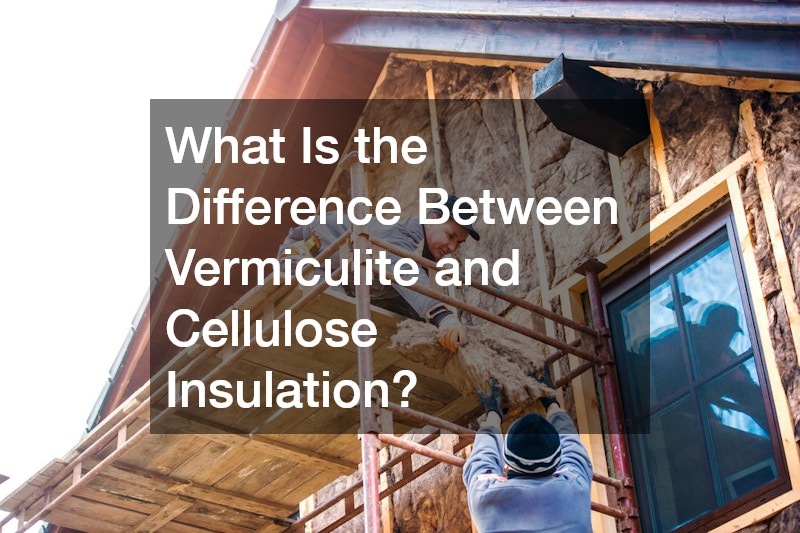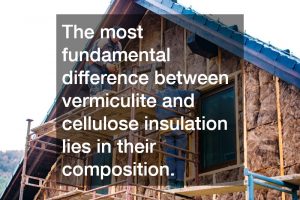
Choosing the right insulation for your home is critical to ensuring energy efficiency, temperature regulation, and overall comfort. Two common types of insulation materials are vermiculite and cellulose, each offering unique properties and benefits. Understanding the difference between vermiculite and cellulose insulation can help homeowners make informed decisions when upgrading or installing insulation in their homes. In this article, we’ll compare these two materials in terms of composition, installation methods, thermal performance, and environmental impact.
1. Composition and Source
The most fundamental difference between vermiculite and cellulose insulation lies in their composition. Vermiculite is a natural mineral that expands when exposed to heat. It’s a lightweight, fire-resistant material that has historically been used in insulation due to its ability to resist high temperatures and absorb moisture. Vermiculite is mined and processed into small, lightweight pellets that can be easily blown into walls, attics, or other spaces needing insulation.
On the other hand, cellulose insulation is made from recycled paper products, primarily newsprint, which is treated with fire-retardant chemicals like boric acid. This makes cellulose a highly eco-friendly option for insulation, as it repurposes materials that would otherwise end up in landfills. Because cellulose is made from organic materials, it has a lower environmental impact compared to mineral-based products like vermiculite.
2. Installation Methods
Both vermiculite and cellulose insulation are installed using similar techniques, but there are some differences worth noting. Vermiculite is usually poured or blown into open spaces such as attics or walls where it can settle into place and fill gaps. Because of its pellet-like form, vermiculite flows easily and can be spread evenly in irregular spaces, providing excellent coverage. However, it may need to be re-leveled or replenished over time as the material can settle unevenly.
Cellulose insulation is typically blown into wall cavities, attics, or ceilings using specialized equipment. One of the advantages of cellulose is that it can be densely packed into tight spaces, making it highly effective at sealing gaps and reducing air leakage. The dense application of cellulose helps improve its thermal performance, especially in older homes that might have drafts or air leaks. Additionally, cellulose settles less than vermiculite over time, maintaining its insulating properties more consistently.
3. Thermal Performance and Fire Resistance
When it comes to thermal performance, the difference between vermiculite and cellulose insulation becomes more apparent. Vermiculite has moderate insulating properties, with an R-value (a measure of thermal resistance) ranging from R-2.0 to R-3.0 per inch. While it provides basic insulation, vermiculite is often used more for its fire resistance and moisture-absorbing qualities than its ability to retain heat. Vermiculite is an ideal choice for areas that need fireproofing or where moisture could be an issue, but it may not offer the best thermal insulation compared to other materials.
Cellulose insulation, on the other hand, is known for its excellent thermal performance, with an R-value of R-3.2 to R-3.8 per inch. This makes cellulose a more effective insulator, especially in cold climates where energy efficiency is a priority. The fire-retardant chemicals used to treat cellulose also make it fire-resistant, though not to the same extent as vermiculite. Overall, cellulose provides better thermal insulation than vermiculite and helps reduce energy costs by keeping homes warmer in the winter and cooler in the summer.
The difference between vermiculite and cellulose insulation comes down to several factors, including composition, thermal performance, installation methods, and environmental impact. Vermiculite is valued for its fire resistance and moisture control, but its insulating properties are less effective than cellulose. In contrast, cellulose insulation offers superior thermal performance, eco-friendliness, and is ideal for homeowners looking to reduce energy costs. Understanding these differences can help you choose the best insulation for your specific needs and home environment.


